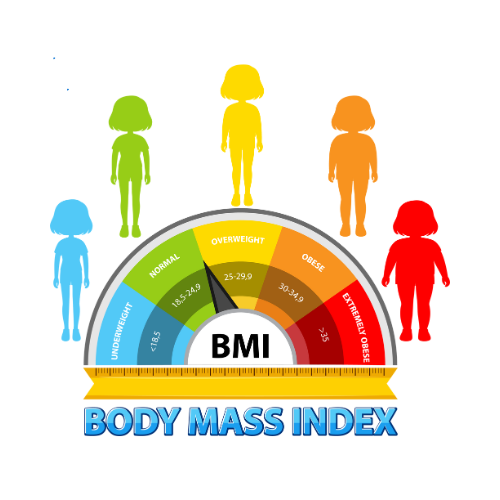Rising Urban Obesity in Pakistan: Causes, Consequences, and Solutions
Summary: Urban Pakistan is experiencing a rapid rise in overweight and obesity in Pakistan that’s driving diabetes, heart disease, and other NCDs. Evidence shows lifestyle shifts (diet, inactivity), urban design, and socio-economic change as key drivers—yet practical, local solutions can bend the curve.
The Big Picture
Recent public-health data show obesity is climbing across Pakistan, with national and provincial studies warning of an “epidemic” level burden that fuels noncommunicable diseases (NCDs). WHO country indicators track rising adult obesity, while Pakistan-focused research links excess weight to surges in diabetes and cardiovascular risk. datadotPubMedEMROPMC
Why Urban Obesity in Pakistan Is Hit Hardest
1) Food Environment & Diet Transition
- Greater access to ultra-processed foods, sugary beverages, and frequent restaurant eating in cities shifts caloric intake upward and reduces diet quality.
- Global and local datasets associate urbanization with higher BMI and metabolic risk in Pakistan. Global Obesity ObservatoryEMRO
2) Sedentary Lifestyles
- Desk jobs, long commutes, and low walkability reduce daily energy expenditure. Evidence from Pakistan shows physical inactivity tracking with overweight/obesity and NCD risk factors. EMRO
3) Socio-Cultural Patterns
- Social meals, celebratory foods, and late-night eating are more common in urban settings, compounding caloric load. Observational work in Pakistan ties household and school environments to higher childhood and adolescent obesity in cities. EMROFrontiers
The Health Consequences
- Diabetes: National analyses report very high type-2 diabetes prevalence, strongly linked to excess body weight and central adiposity in Pakistan. BMJ OpenDiabetes Research and Clinical Practice
- Cardiovascular Disease & Hypertension: NCD studies in Pakistan show high rates of hypertension and ischemic heart disease alongside widespread overweight/obesity. EMRO
- Children & Adolescents: Urban youth face rising obesity and metabolic-syndrome risk, foreshadowing heavier adult NCD burden if unaddressed. PMCThe Lancet
What the Data Say (at a glance)
- WHO Pakistan indicators track adult obesity and child/adolescent obesity trends, reflecting an ongoing rise. datadot
- NDSP/peer-reviewed studies describe obesity as at “epidemic proportions,” calling for urgent prevention. PubMedScienceDirect
- EMRO/WHO NCD work highlights that a large share of adults carry overweight/obesity and multiple NCD risks. EMRO+1
- Global Obesity Observatory collates Pakistan’s prevalence data and survey sources for policy and planning. Global Obesity Observatory
Solutions Tailored to Urban Obesity in Pakistan
1) Make Healthy Food the Easy Default
- Policy: Front-of-pack labels, school-canteen standards, and limits on ultra-processed food marketing to children.
- City actions: Incentivize fresh-produce outlets and healthier restaurant options in dense neighborhoods.
- Household tips: Swap fried snacks/sugary drinks for fruit, nuts, lassi (unsweetened), and home-cooked pulses.
2) Build Movement Into Daily Life
- Urban design: Safer sidewalks, shade, parks, and bicycle lanes in high-traffic corridors.
- Workplaces: Step-count challenges, active breaks, and stairs-first policies.
- Individuals: Aim for 150+ minutes/week moderate activity; use walking meetings and evening strolls after meals.
3) Early Screening & Risk Management
- Clinics/PHC: Routine BMI/waist checks; counsel on diet, sleep, stress, and physical activity.
- High-risk groups: Offer group coaching and culturally tailored weight-management programs.
- Digital tools: Telehealth check-ins, SMS nudges, and local-language apps can scale support. (The WHO STEPS framework underscores monitoring behavioral risks for policy targeting. ) Global Obesity Observatory
4) Youth-Focused Prevention
- Schools: Daily physical education, healthy-canteen policies, no-soda rules.
- Parents: Structure screen time, encourage outdoor play, and model healthier eating—urban studies in Pakistan point to school/home settings as leverage points. EMRO
Practical, Culturally Fit Habits You Can Start This Week
- Plate method, Pakistani style: ½ vegetables/salad, ¼ roti/brown rice, ¼ protein (dal, fish, chicken), with mindful portions of oil/ghee.
- Sweet swaps: Dates or seasonal fruit instead of mithai or sugary tea multiple times a day.
- Movement: 30-minute brisk walk in the evening; short 5–7 minute movement breaks every hour at the office.
- Sleep & stress: Aim for 7–8 hours/night; practice brief dhikr/breathing between tasks—sleep and stress strongly influence weight.
The Labon’s Role
At The Labon, we share research-backed guidance for weight management built around urban Pakistani realities—meal frameworks, activity plans that work with busy schedules, and when appropriate, evidence-based clinical pathways. Explore our Weight Management hub for practical, local solutions you can apply today.
- Start here: The Labon – Weight Management
Key References (selected)
- WHO country indicators – Pakistan: adult and child/adolescent obesity tracking. datadot
- NDSP / Pakistan obesity research: obesity at epidemic levels; urban–rural insights. PubMedScienceDirect
- WHO EMRO – NCD burden & risk factors in Pakistan: high overweight/obesity alongside hypertension and diabetes. EMRO+1
- Global Obesity Observatory – Pakistan profile: prevalence data and survey compendium. Global Obesity Observatory
- Diabetes prevalence (Pakistan): high national burden tied to metabolic risks. BMJ OpenDiabetes Research and Clinical Practice
- Child/adolescent obesity in Pakistan: rising urban burden and school/home determinants. PMCEMROFrontiers







